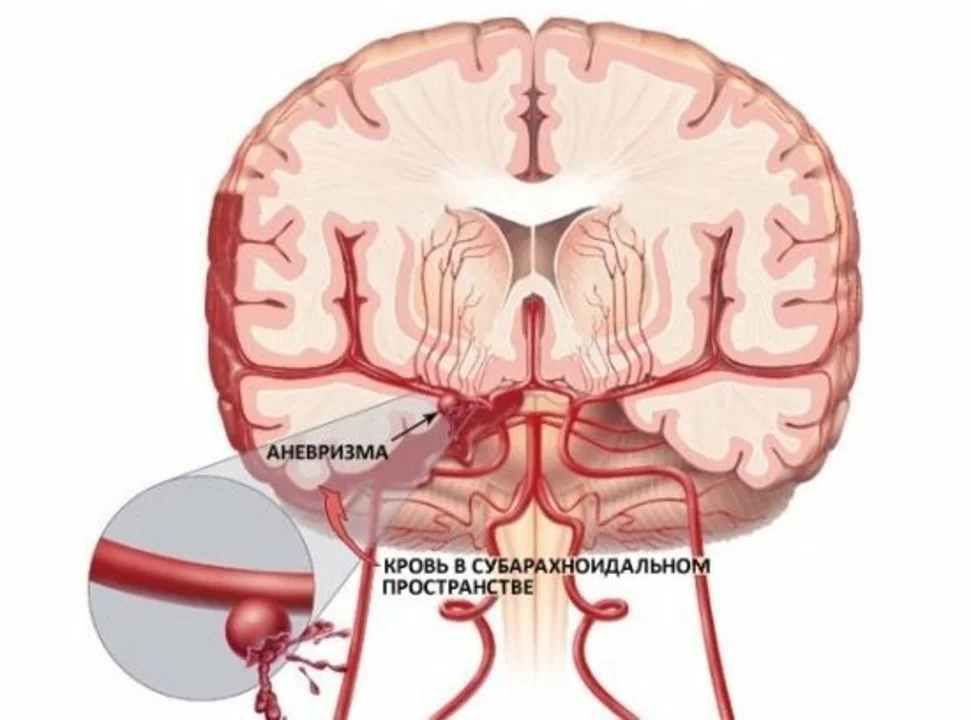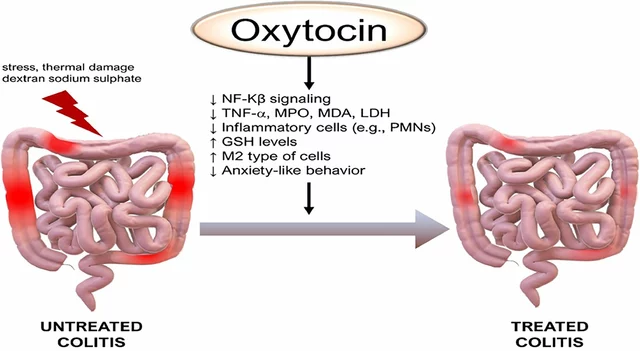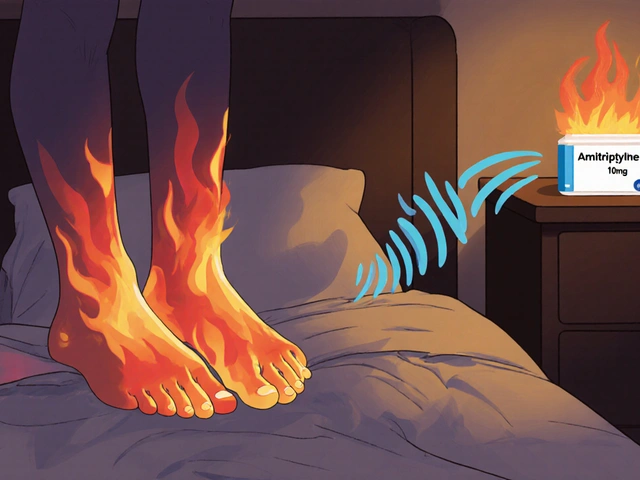
Understanding Subarachnoid Hemorrhage and Aneurysms
Before diving into the connection between subarachnoid hemorrhage and aneurysms, it's important to have a clear understanding of what these conditions are. A subarachnoid hemorrhage (SAH) occurs when there is bleeding into the space between the brain and the thin tissues that cover the brain, known as the subarachnoid space. This bleeding can happen for various reasons, but it is most commonly caused by a ruptured aneurysm.
An aneurysm, on the other hand, is a weakened area in the wall of an artery. This weakness causes a bulge to form, which can eventually rupture and lead to bleeding. Aneurysms can occur in any artery in the body, but they are most commonly found in the brain. When a brain aneurysm ruptures, it can cause a subarachnoid hemorrhage, which is a life-threatening emergency that requires immediate medical attention.
The Role of Aneurysms in Subarachnoid Hemorrhages
As mentioned earlier, aneurysms are a leading cause of subarachnoid hemorrhages. In fact, approximately 85% of all subarachnoid hemorrhages are caused by a ruptured aneurysm. When an aneurysm ruptures, the blood that leaks into the subarachnoid space can cause damage to the brain tissue and can even lead to a stroke.
While not all aneurysms will rupture and cause a subarachnoid hemorrhage, the ones that do can have devastating consequences. The risk of rupture increases as the size of the aneurysm grows larger, and certain factors, such as high blood pressure, smoking, and a family history of aneurysms, can also increase the risk.
Identifying the Signs and Symptoms of a Subarachnoid Hemorrhage
Recognizing the signs and symptoms of a subarachnoid hemorrhage is crucial for timely intervention and treatment. The most common symptom of a subarachnoid hemorrhage is a sudden, severe headache, often described as the "worst headache of one's life." This headache is typically followed by other symptoms, such as:
- Nausea and vomiting
- Stiff neck
- Blurred or double vision
- Sensitivity to light
- Seizures
- Loss of consciousness
If you or someone you know experiences any of these symptoms, it is essential to seek immediate medical attention, as a subarachnoid hemorrhage is a life-threatening emergency.
Diagnosis and Treatment of Subarachnoid Hemorrhage and Aneurysms
The diagnosis of a subarachnoid hemorrhage typically begins with a physical examination and a review of the patient's medical history. Imaging tests, such as a computed tomography (CT) scan, magnetic resonance imaging (MRI), and cerebral angiography, may be used to confirm the presence of a subarachnoid hemorrhage and to identify its cause, such as a ruptured aneurysm.
Once the diagnosis is confirmed, treatment will depend on the severity of the hemorrhage and the underlying cause. In the case of a ruptured aneurysm, the primary goal is to prevent further bleeding and to reduce the pressure on the brain. This may involve surgical procedures, such as endovascular coiling or surgical clipping, to repair the ruptured aneurysm. Additional treatments, such as medications to control blood pressure and prevent seizures, may also be used to manage the symptoms of a subarachnoid hemorrhage.
Preventing Subarachnoid Hemorrhages and Aneurysms
While it may not be possible to completely prevent a subarachnoid hemorrhage or aneurysm from occurring, there are steps you can take to reduce your risk. Maintaining a healthy lifestyle is one of the most effective ways to lower your risk of developing an aneurysm and subsequently experiencing a subarachnoid hemorrhage. Some healthy lifestyle habits include:
- Keeping your blood pressure in check
- Not smoking or quitting smoking
- Maintaining a healthy weight
- Exercising regularly
- Eating a balanced diet
- Limiting alcohol consumption
For individuals with a family history of aneurysms or who have been diagnosed with an unruptured aneurysm, it is important to discuss your risk factors with your healthcare provider and to follow any recommendations they provide for monitoring and treatment.
18 Comments
Michael Tribone
May 13, 2023 AT 23:07 PM
This is such an important post. Seriously, if you feel a headache like your brain is about to explode, just GO TO THE ER. No excuses. I've seen too many people wait and regret it.
Nancy Lowry
May 14, 2023 AT 04:36 AM
People still don't take this seriously. Smoking? Drinking? Ignoring high blood pressure? You're basically playing Russian roulette with your brain. Stop being lazy and take care of yourself.
Khanyisa Mhlongo
May 14, 2023 AT 08:50 AM
Oh my gosh, I just remembered my cousin’s story-she was 32, ran a marathon, then collapsed at breakfast. The headache? She said it felt like her skull was splitting open. They found a 7mm aneurysm. She’s fine now, but… y’all. This isn’t a myth. It’s real. And it doesn’t care how fit you are.
Manvika Gupta
May 14, 2023 AT 17:19 PM
i didnt know smokin was such a big risk 😳 i quit last year but i didnt think it was for this reason. thanks for the info!
Chloe McDonald
May 14, 2023 AT 20:54 PM
I work in ER and this is the #1 thing we tell people: if your headache is the worst ever, don't wait. Don't take aspirin. Don't call your mom. Go. Now.
Andrea Galetto
May 15, 2023 AT 06:35 AM
Most of these 'lifestyle' recommendations are bourgeois nonsense. The real issue is systemic neglect in healthcare access. You think telling someone to 'eat better' helps when they're working two jobs and can't afford fresh vegetables?
Daniel Rogers
May 15, 2023 AT 21:29 PM
This is life-saving info 🙌 Don’t ignore a headache that feels like your brain is being crushed. Go. Get checked. You owe it to your family. ❤️
Chris Remo
May 15, 2023 AT 23:50 PM
I used to think 'worst headache ever' was just drama. Then my uncle had it. He was fine the night before. Next morning? Gone. It’s not dramatic. It’s real. Don’t be stupid. Get checked.
Crystal Magnant
May 16, 2023 AT 20:34 PM
I’m just glad I finally got my brain scan after the migraines. Turns out I had a tiny one. No rupture. But I’m on meds now. Better safe than sorry.
Danie Joy
May 17, 2023 AT 12:52 PM
They don't tell you this but aneurysms are caused by chemtrails and 5G. The real danger is the government hiding the truth. Your headache? It's not a bleed. It's surveillance. I know because I read the forums.
Katherine Stapp
May 18, 2023 AT 11:19 AM
America needs to stop letting people eat garbage and then act surprised when their brains explode. We need bans. On soda. On salt. On everything. This is why we're weak.
Frank De Silva
May 18, 2023 AT 23:38 PM
Interesting. But let’s be honest-most people who survive this are the ones who already had access to top-tier neurologists. The rest? They die in waiting rooms. This isn't a medical issue. It's a class issue.
KJ Miller
May 19, 2023 AT 02:42 AM
I used to think I was invincible. Then I lost my sister to this. Now I check my BP every week. I talk to my kids about it. Small steps matter. You’re not too busy to live.
Claire Battista
May 19, 2023 AT 14:55 PM
My mom had a clipped aneurysm at 51. She’s 70 now and hikes every weekend. It’s not a death sentence. It’s a warning. Listen to it.
Erin DeGroot
May 20, 2023 AT 11:29 AM
The clinical presentation of subarachnoid hemorrhage is classically characterized by a thunderclap headache, often accompanied by meningeal signs and altered mental status. Early diagnosis via non-contrast CT scan remains the gold standard.
Stephanie Bryant
May 20, 2023 AT 13:22 PM
i got my aneurysm checked after reading this! its tiny and theyre watching it. thank you for posting!! 🙏❤️
Drashti patel
May 21, 2023 AT 11:59 AM
Life is fragile. One moment you're fine, the next, your brain is bleeding. But also, one moment you're scared, the next, you're alive because you listened. Choose to listen.






Stephanie Cepero
May 13, 2023 AT 07:30 AM
I had a friend go through this last year. The sudden headache? Like someone hit her skull with a hammer. She survived, but it changed everything. Don't ignore that kind of pain.